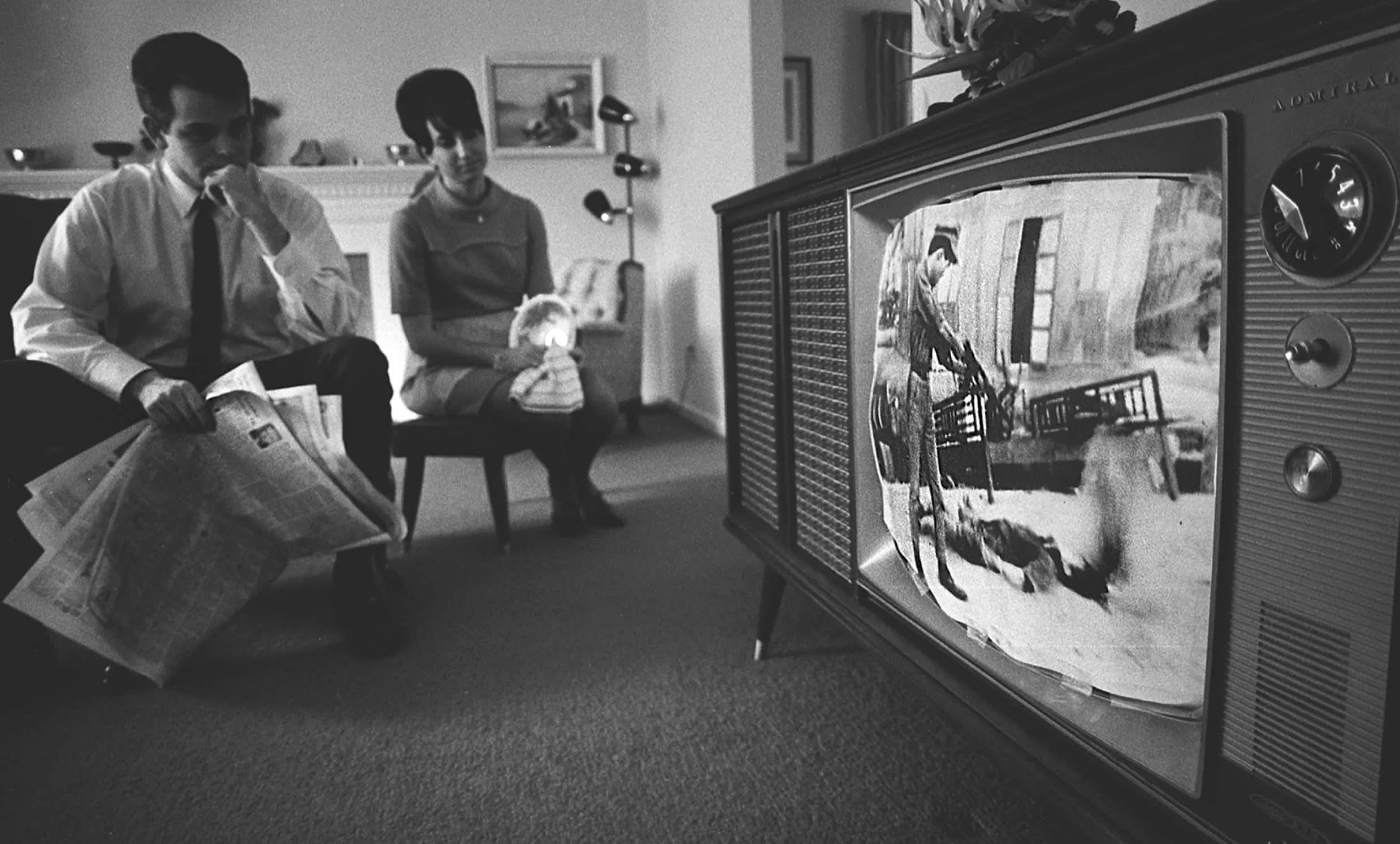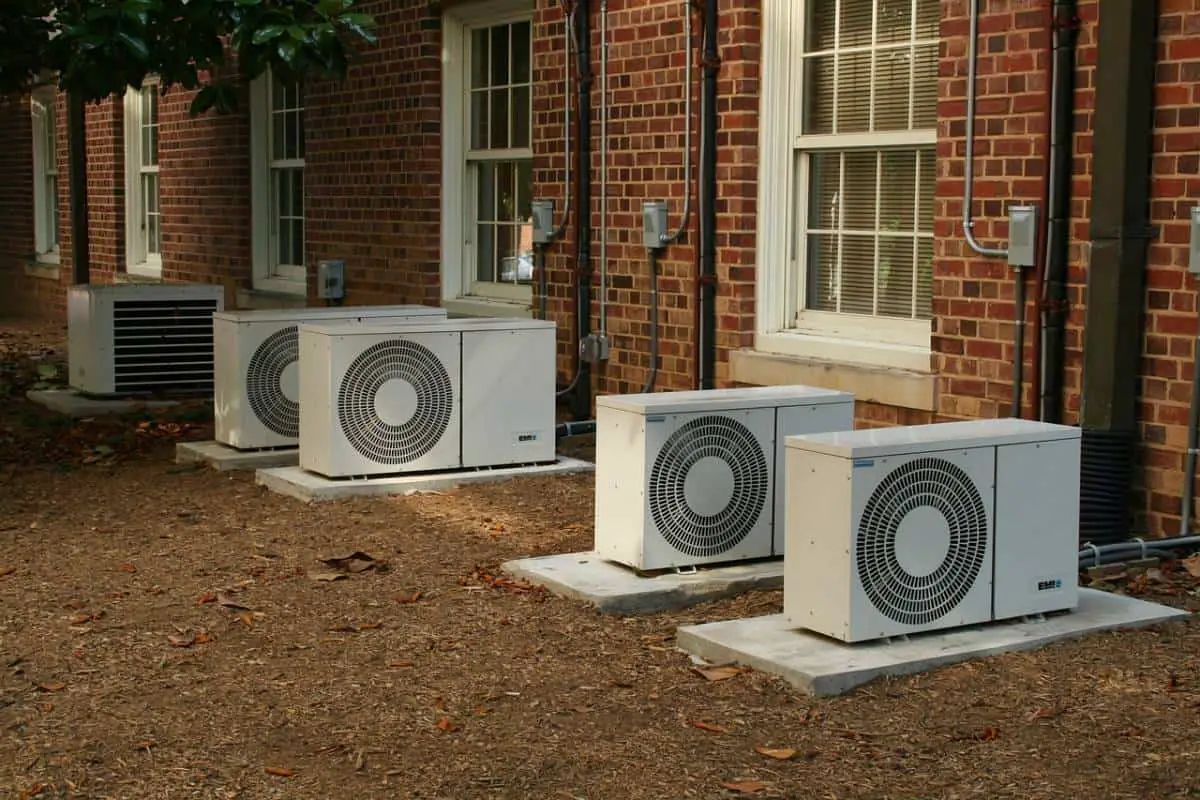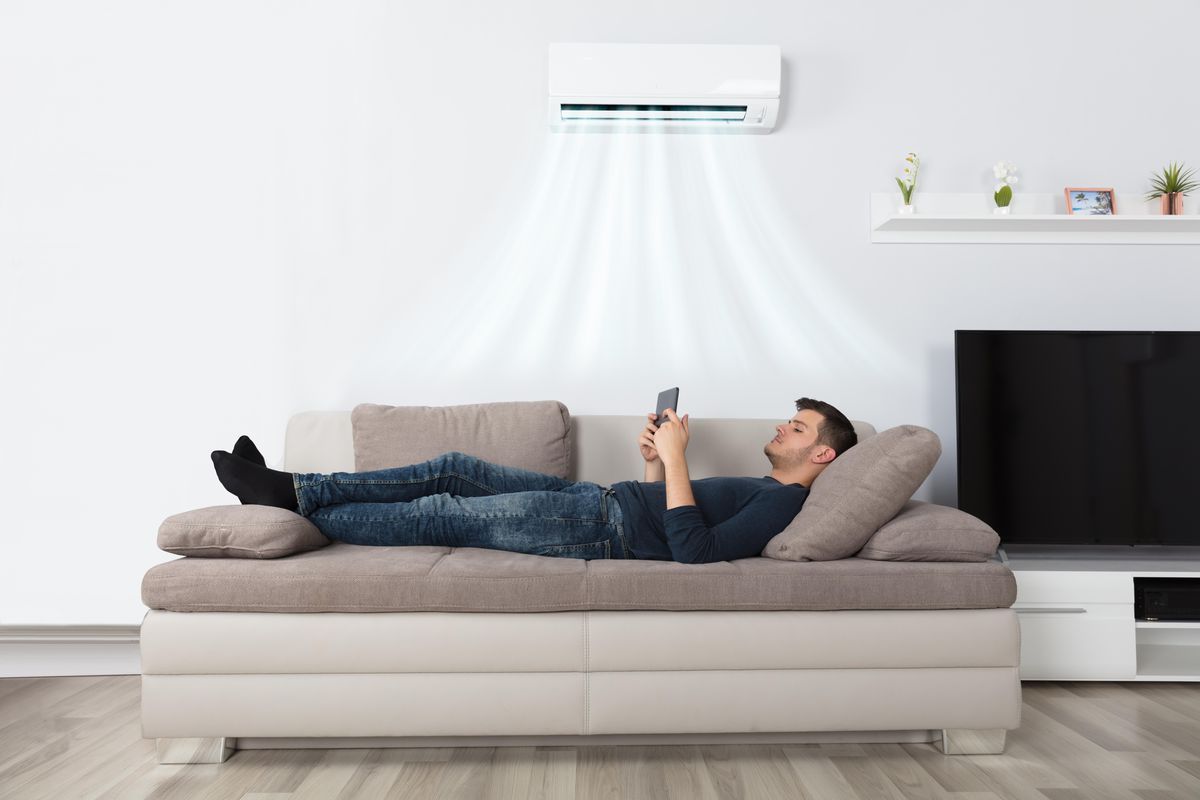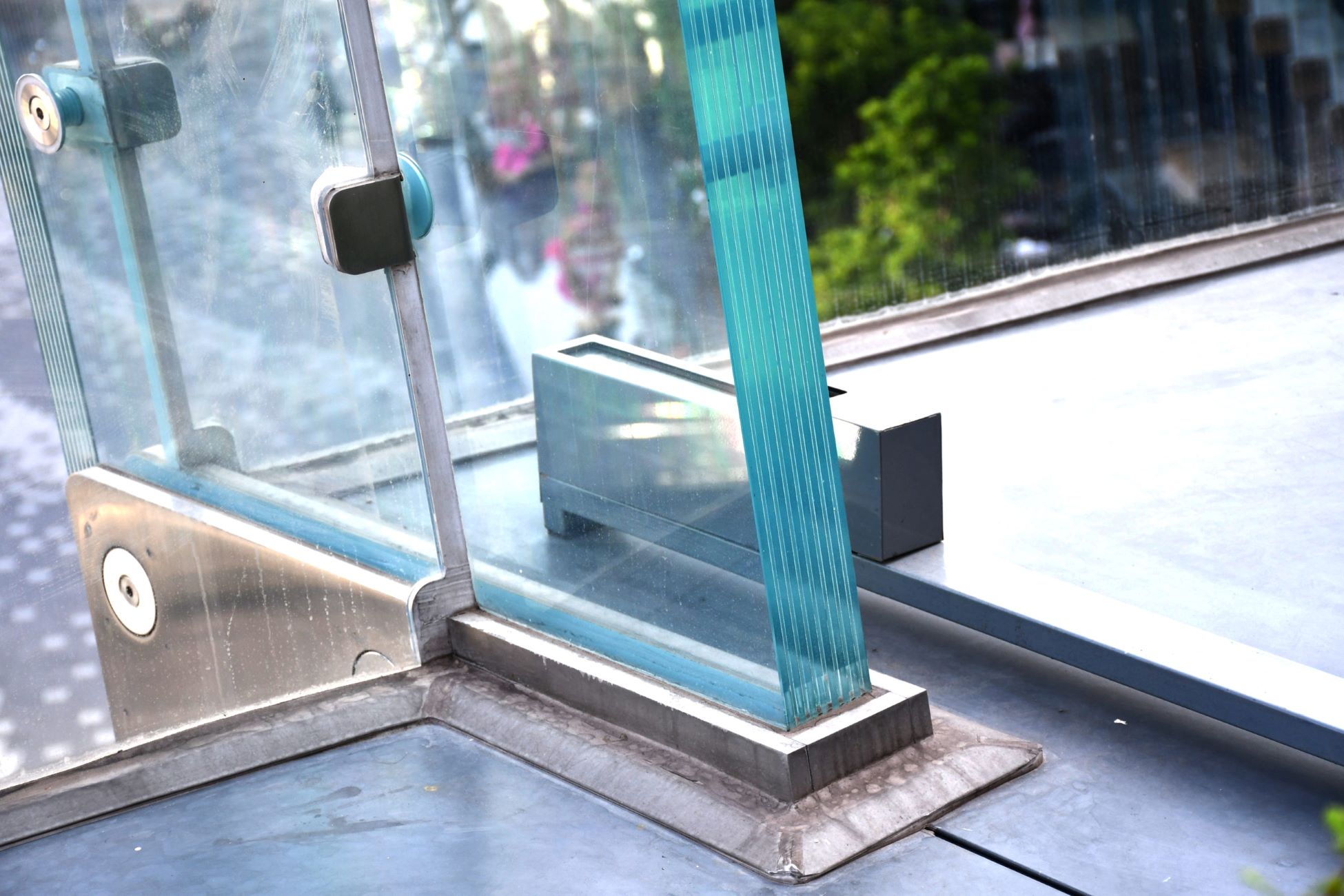Home>Home Maintenance>How Did Air Conditioning Impact Society


Home Maintenance
How Did Air Conditioning Impact Society
Modified: March 25, 2024
Explore the profound impact of air conditioning on society and the importance of home maintenance. Discover how this technology revolutionized comfort and transformed our living spaces.
(Many of the links in this article redirect to a specific reviewed product. Your purchase of these products through affiliate links helps to generate commission for Storables.com, at no extra cost. Learn more)
Introduction
Air conditioning, a technological marvel that has become an essential part of our modern lives, has greatly impacted society in numerous ways. From providing comfortable indoor environments to revolutionizing architectural design and even influencing our health, the development and widespread adoption of air conditioning systems have had far-reaching consequences on both individuals and communities.
In this article, we will explore the early development of air conditioning, its influence on health and comfort, the changes it has brought to architectural design, its economic impact, its environmental consequences, and the social and cultural effects it has had on society.
Let us delve into the fascinating world of air conditioning and discover the profound impact it has had on our lives.
Key Takeaways:
- Air conditioning has improved our health and comfort by regulating indoor temperature, air quality, and humidity. It has also enhanced productivity and sleep quality, but responsible use is essential to avoid potential health risks.
- The widespread use of air conditioning has transformed our social behaviors, work patterns, and architectural designs. While providing comfort, it’s important to balance our reliance on artificial environments with our connection to nature.
Read more: How Did The Seed Drill Impact Society
Early Development of Air Conditioning
The history of air conditioning dates back thousands of years, with early attempts to cool indoor spaces observed in ancient civilizations. The ancient Egyptians used various methods such as moistened reeds hung in windows to create a cooling effect through evaporative cooling. Similarly, ancient Chinese cultures used handheld fans and water-powered rotary fans to combat hot climates.
However, the concept of modern air conditioning as we know it today began to take shape in the early 20th century. In 1902, Willis Carrier, an American engineer, invented the first electrical air conditioning system, which was initially designed to control humidity in a printing plant. This breakthrough led to the birth of “controlled environment,” where temperature and humidity could be regulated, creating more comfortable spaces.
Throughout the 20th century, air conditioning technology advanced rapidly. The development of refrigerants, such as the widely used R-22 and later R-410A, enabled efficient cooling systems. Advancements in compressor technology, ventilation systems, and thermostat controls also contributed to the evolution of air conditioning systems.
Initially, air conditioning was a luxury reserved for commercial buildings, theaters, and wealthy individuals. However, with advancements in technology and mass production, air conditioning systems became more affordable and accessible to the general public. By the mid-20th century, it was becoming increasingly common in residential homes and automobiles, transforming the way people lived, worked, and traveled.
The early development of air conditioning was a game-changer not only for comfort but also for industries such as manufacturing, food preservation, and medicine. It allowed for precise control over temperature and humidity, creating optimal conditions for various processes and preserving perishable goods.
Overall, the early development of air conditioning set the stage for the widespread adoption of this technology, shaping the way we live our lives and transforming our understanding of indoor comfort. It laid the foundation for further advancements and innovations that continue to improve the efficiency and effectiveness of air conditioning systems today.
The Influence of Air Conditioning on Health and Comfort
Air conditioning has had a profound impact on both the health and comfort of individuals. By providing a controlled indoor environment, it has significantly improved living and working conditions, particularly in regions with extreme climates.
One of the primary benefits of air conditioning is the ability to regulate temperature. Excessive heat can not only cause discomfort but also lead to health issues such as heat exhaustion and heat stroke. Air conditioning helps to mitigate these risks by providing a cool and comfortable environment, especially during hot summer months.
Furthermore, air conditioning plays a crucial role in maintaining indoor air quality. Modern systems are equipped with filters that effectively remove pollutants, allergens, and airborne particles. This is especially important for individuals with respiratory conditions such as asthma or allergies, as air conditioning can provide relief by reducing the presence of irritants in the air.
In addition to temperature and air quality, air conditioning also helps to control humidity levels. High humidity can lead to mold growth, which can cause respiratory problems and allergies. By dehumidifying the air, air conditioning systems prevent the development of mold and provide a healthier indoor environment.
Air conditioning also significantly improves sleep quality. Studies have shown that a cooler sleeping environment promotes better and more restful sleep. It helps to regulate body temperature, allowing individuals to reach the optimal sleep state more easily.
Moreover, air conditioning has transformed the workplace by creating comfortable conditions that enhance productivity and concentration. Employees are more focused and less fatigued when working in a well-ventilated and temperature-controlled office environment.
However, it is important to note that improper use or excessive reliance on air conditioning can have negative effects on health. A sudden and drastic change in temperature, spending prolonged periods in overly cold environments, or poor maintenance of air conditioning systems can lead to respiratory problems, dry skin, and other health issues. It is essential to use air conditioning responsibly and ensure regular maintenance to avoid these potential risks.
Overall, air conditioning has significantly improved both the health and comfort of individuals by providing controlled indoor environments that regulate temperature, air quality, and humidity. It has become an indispensable technology, enhancing our quality of life and promoting well-being in various settings, from homes to offices and public spaces.
Air Conditioning and Changes in Architectural Design
The widespread adoption of air conditioning has not only influenced the way we live and work but also had a significant impact on architectural design. With the availability of controlled indoor environments, architects have been able to explore new possibilities and push the boundaries of design.
Prior to the advent of air conditioning, architecture in hot climates often revolved around passive cooling techniques. Buildings were designed with features such as shaded courtyards, high ceilings, and strategically placed windows to enhance airflow and minimize heat gain. However, these designs were limited in their effectiveness in providing comfort during extreme heat.
Air conditioning revolutionized architectural design by removing the reliance on these passive cooling techniques. Architects were no longer limited by the constraints of natural ventilation and could create structures with sealed environments, allowing for greater control over temperature, humidity, and air quality.
The introduction of air conditioning also led to changes in building materials and construction methods. With the ability to maintain consistent indoor environments, designers could incorporate materials that were previously avoided due to their poor thermal performance. Glass became a popular choice, allowing for abundant natural light and panoramic views without sacrificing comfort.
The scale and shape of buildings also evolved with the advent of air conditioning. In hot climates, buildings could now be designed with large windows and expansive glass facades, as the cooling systems would compensate for the additional heat gain. This resulted in the rise of modernist architecture, characterized by sleek lines, open spaces, and seamless indoor-outdoor transitions.
As air conditioning became more prevalent, architects began to prioritize the integration of systems and ductwork within the design of buildings. The challenge was to ensure efficient distribution of cooled air while maintaining aesthetic appeal. Concealing vents and ducts behind walls, floors, or ceilings became a popular approach, allowing for unobstructed and visually appealing interior spaces.
The impact of air conditioning on architectural design has not been limited to aesthetics and comfort. The energy efficiency of buildings has also become a key consideration. Designers now focus on incorporating passive cooling strategies alongside air conditioning systems to reduce energy consumption. This includes features such as solar shading, natural ventilation, and sustainable materials.
Overall, air conditioning has significantly influenced architectural design, enabling architects to create structures that prioritize comfort, aesthetics, and energy efficiency. It has opened up new possibilities for creativity and innovation, shaping the way buildings are designed and experienced in both hot and cold climates.
Air conditioning revolutionized society by making it possible to live and work comfortably in hot climates, leading to population growth in places like the southern United States and the Middle East. It also allowed for the development of new industries and improved productivity in existing ones.
Economic Impact of Air Conditioning
The widespread use of air conditioning has had a profound economic impact, influencing various sectors and driving economic growth in multiple ways.
One of the primary economic benefits of air conditioning is its contribution to increased productivity. Comfortable indoor environments provided by air conditioning systems create optimal working conditions, leading to higher productivity levels among employees. Studies have shown that employees are more focused, alert, and efficient when working in temperature-controlled environments, resulting in improved output and performance.
Moreover, air conditioning has transformed industries that rely on controlled environments, such as the manufacturing, food processing, and healthcare sectors. With precise temperature and humidity control, air conditioning systems enable the production and preservation of goods that would otherwise be highly susceptible to heat damage or spoilage. This leads to improved product quality and reduced waste, resulting in cost savings and increased profits.
Air conditioning has also had a significant impact on the real estate market. Properties equipped with air conditioning systems are highly sought after and command higher rental and resale values. The availability of air conditioning has become a standard requirement for many tenants and homeowners, driving up demand for properties that offer this amenity.
In addition to the real estate industry, the HVAC (Heating, Ventilation, and Air Conditioning) sector itself has experienced substantial growth. The increased demand for air conditioning systems has led to job creation and the growth of related industries, such as installation, maintenance, and repair services. The HVAC industry has become a significant contributor to the economy, providing employment opportunities and stimulating economic activity.
However, it is important to consider the energy consumption and associated costs of air conditioning. As the demand for air conditioning increases, so does the energy required to operate these systems. This can lead to higher energy bills for individuals and businesses, impacting their overall expenses. It is crucial to adopt energy-efficient practices and technologies to mitigate these costs and reduce the environmental impact of air conditioning.
Overall, the economic impact of air conditioning is undeniable. It has improved productivity, transformed industries, boosted real estate values, and spurred the growth of the HVAC sector. While it is essential to consider the energy consumption aspect, the benefits brought about by air conditioning systems have played a crucial role in driving economic development and enhancing our quality of life.
Read more: How Did Light Bulb Impact The World
Environmental Consequences of Air Conditioning
The widespread use of air conditioning has had significant environmental consequences, primarily in terms of energy consumption, refrigerant emissions, and the exacerbation of global warming.
One of the major environmental concerns associated with air conditioning is the significant amount of energy required to operate these systems. Air conditioning consumes a substantial portion of the energy used in buildings, leading to increased demand for electricity. This reliance on fossil fuel-generated electricity contributes to carbon dioxide (CO2) emissions, a major contributor to climate change.
In addition to energy consumption, air conditioning systems also use refrigerants, which have the potential to harm the environment. Older systems often use chlorofluorocarbons (CFCs) and hydrochlorofluorocarbons (HCFCs) as refrigerants, which have been found to deplete the ozone layer and contribute to global warming. Although these substances have largely been phased out, there are still concerns surrounding the use of hydrofluorocarbons (HFCs), which are potent greenhouse gases with high global warming potential.
Furthermore, the improper disposal of air conditioning units can have negative environmental impacts. If not handled correctly, refrigerants and other components can be released into the atmosphere and contribute to the depletion of the ozone layer or contaminate soil and water. It is vital to ensure proper recycling and responsible disposal of old air conditioning units to minimize these environmental consequences.
The energy demand and associated greenhouse gas emissions from air conditioning also contribute to the urban heat island effect. As more buildings rely on air conditioning, the excess heat from cooling systems is released into the environment, increasing local temperatures in urban areas. This heat island effect exacerbates the already high temperatures, leading to higher energy demand and a vicious cycle of increased cooling requirements.
To mitigate the environmental consequences of air conditioning, there are several measures that can be implemented. Energy-efficient air conditioning systems, such as those with high SEER (Seasonal Energy Efficiency Ratio) ratings, can reduce overall energy consumption. The use of alternative refrigerants with lower global warming potential, such as hydrofluoroolefins (HFOs), can also help minimize the environmental impact.
Additionally, passive cooling techniques, such as proper insulation, shading, and natural ventilation, can reduce the reliance on air conditioning systems. Strategic positioning of buildings, planting trees, and incorporating green spaces can help cool urban environments, reducing the urban heat island effect.
Overall, the environmental consequences of air conditioning are significant and need to be addressed. It requires a collective effort to promote energy efficiency, reduce greenhouse gas emissions, and adopt sustainable alternatives to minimize the impact on the environment.
Social and Cultural Effects of Air Conditioning
The advent of air conditioning systems has had profound social and cultural effects, transforming the way we live, work, and interact with our environments.
One of the most significant impacts of air conditioning is its ability to create comfortable indoor spaces, regardless of the outside weather conditions. This has reshaped our daily lives by allowing us to escape from extreme heat or humidity, and seek refuge in cool and pleasant environments. Air conditioning has become an essential part of our homes, offices, schools, and public spaces, enabling us to carry on with our activities comfortably.
Comfortable indoor environments provided by air conditioning have also influenced social behaviors and habits. For instance, it has become common to gather in air-conditioned spaces, such as shopping malls, movie theaters, cafes, and restaurants, for leisure activities and social interactions. Air-conditioned venues have become popular meeting places, fostering social connections and community engagement.
The availability of air conditioning has also impacted our work patterns and productivity. With comfortable workspaces, employees can focus better and be more productive, leading to improved work efficiency. Air conditioning has played a role in shaping work cultures, allowing for longer working hours and the ability to work in any weather conditions. It has enabled industries and economies to thrive in regions with extreme climates, creating jobs and improving living standards.
Moreover, air conditioning has contributed to changes in clothing and fashion choices. In hot climates, people can comfortably wear lightweight and breathable clothing indoors without the concern of excessive sweating or discomfort. The availability of air conditioning has influenced fashion trends, allowing for different fabrics and styles that prioritize comfort without compromising style.
The introduction of air conditioning has also impacted architectural and urban planning practices. Cities have adapted to the demand for air-conditioned spaces, with the proliferation of high-rise buildings, shopping centers, and other structures designed to provide cooling comfort. The cultural landscape of communities and the built environment have been shaped by the priority given to air conditioning in their design and construction.
However, the widespread use of air conditioning has also brought about concerns regarding our reliance on artificial environments. The comfort provided by air conditioning has led to a detachment from natural elements, reducing our exposure to outdoor environments and potentially isolating individuals from nature. This has sparked discussions and movements advocating for a balance between the benefits of air conditioning and the importance of connecting with nature.
Overall, the social and cultural effects of air conditioning have been significant, influencing how we live, work, and interact with our surroundings. It has reshaped our daily routines, social behaviors, and has become an integral part of our physical and cultural environments. As we continue to navigate the implications of air conditioning, efforts to strike a balance between comfort, sustainability, and our connection with nature will be important for future generations.
Conclusion
Air conditioning has revolutionized society in numerous ways, impacting our health, comfort, architectural design, economy, environment, and cultural practices. The early development of air conditioning systems paved the way for the widespread adoption of this technology, improving our quality of life and enabling us to thrive in extreme climates.
With the ability to regulate temperature, air conditioning has provided us with comfortable indoor environments, enhancing our well-being and productivity. It has had a significant influence on the design of buildings and spaces, allowing for greater creativity, energy efficiency, and integration of HVAC systems. The economic impact of air conditioning is evident, driving productivity, transforming industries, and contributing to the growth of the HVAC sector.
However, the environmental consequences of air conditioning cannot be ignored. The energy consumption associated with air conditioning contributes to greenhouse gas emissions and climate change, while the use of refrigerants can harm the ozone layer and contribute to global warming. It is crucial to embrace energy-efficient technologies, sustainable practices, and responsible disposal methods to minimize the environmental impact.
Furthermore, air conditioning has reshaped our social and cultural behaviors. It has influenced social interactions, work patterns, clothing choices, and architectural practices. While providing comfort, it is important to strike a balance and ensure that we maintain our connection with nature and the outdoor environment.
In conclusion, air conditioning has had a profound impact on society. It has provided us with comfortable indoor environments, driven economic growth, reshaped architectural design, and influenced our social and cultural practices. As we continue to enjoy the benefits of air conditioning, it is crucial to take into consideration its environmental consequences and strive for sustainable and responsible practices. By doing so, we can continue to enjoy the comfort and convenience air conditioning provides while minimizing its impact on our planet.
Frequently Asked Questions about How Did Air Conditioning Impact Society
Was this page helpful?
At Storables.com, we guarantee accurate and reliable information. Our content, validated by Expert Board Contributors, is crafted following stringent Editorial Policies. We're committed to providing you with well-researched, expert-backed insights for all your informational needs.














